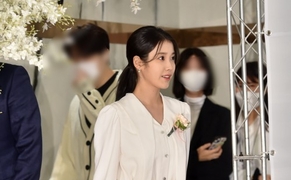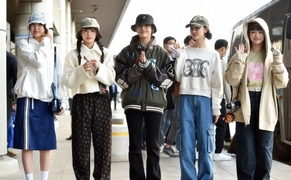The New National Theater Tokyo presents the 3rd work in its 'Japanese Opera for the World Stage' series, a world premiere
 |
| A scene from the opera Natasha (c) Rikimaru Hotta / New National Theatre, Tokyo |
Since the appointment of conductor Kazushi Ōnoas artistic director for the 2018/2019 season, the New National Theater Tokyo(NNTT), Japan's national opera house, has consistently pursued its 'JapaneseOpera for the World Stage' series. This initiative aims to create world-classoriginal Japanese operas. On August 11, NNTT premiered Toshio Hosokawa's opera"Natasha," the third work in the series.
The opera "Natasha" was composedby Toshio Hosokawa, one of Japan's most renowned composers. A disciple ofI-sang Yun, Hosokawa is celebrated for his unique musical world rooted inJapanese classical traditions and culture. The libretto was written by YokoTawada. Yoko Tawada, who has won numerous literary awards, including theAkutagawa Prize, Japan's most prestigious literary award, lives in Germany andwrites in both Japanese and German.
Toshio Hosokawa has focused on expressingthe form of water through sound. In his works, images of water are oftentransformed into music. In addition to water, natural elements such as wind andtrees play a central role in his compositions. In this opera, which deals withthe environmental crisis facing the earth due to industrialization, massculture, materialism, and the Great East Japan Earthquake, he revives thedesperate cries of nature through music. The representative characteristics ofTawada Yoko, who wrote the libretto, such as transcending ethnicity andborders, are also fully incorporated into the opera.
 |
| A scene from the opera Natasha (c) Rikimaru Hotta / New National Theatre, Tokyo |
The opera "Natasha" begins withNatasha and Arato, who have left their desolate homeland, wandering and meetingat a rugged seaside. At that moment, countless sounds, difficult todistinguish, whisper and overflow from the sea, said to be the 36 languagesthat describe the sea. Amidst a mix of Japanese, German and Ukrainian, the twocannot communicate through language, but find a common ground and share aconnection. Then a third figure appears, claiming to be the grandson ofMephistopheles, and leads them on a journey through hell.
The work follows a typical narrativestructure in which two wandering protagonists embark on a journey in search ofsalvation, gaining enlightenment and growth through encounters with variouscharacters along the way. Natasha and Arato also return with a new language atthe end of their journey through the seven circles of hell. Like Dante's"Divine Comedy," Natasha and Arato travel through hell and encounterthe state of the earth, which has been ruined by man. What the protagonistswitness on their journey through hell is the harsh price of the development ofhuman civilization. The groaning of the earth heard in the opera is like abill.
In this opera, Toshio Hosokawa presents hispowerful tonal works. The metallic sounds of electronic instruments were usedto symbolize the environment destroyed by mechanization and industrialization.Although Hosokawa's characteristic sound effects, such as waves and watersounds, remained, the music conveyed his message in a much more concrete waythan in his previous works. The experiential reality created by human greed wasexpressed in music. Kazushi Ono, together with the Tokyo PhilharmonicOrchestra, skillfully led this ever-changing work, which intersects variouslanguages and musical forms, with a profound interpretation.
 |
| A scene from the opera Natasha (c) Rikimaru Hotta / New National Theatre, Tokyo |
Director Christian Räth created a stagewith a strong sense of individuality. The different characters that appear ontheir way through the seven circles of hell fill the stage, sometimes rough andvulgar, sometimes rough and desolate. The visuals, designed by Clemens Walter, alsoshowcased high-quality media art and contributed to the overall completeness ofthe opera.
Soprano Ilse Eerens, who took on the roleof Natasha, delivered a mysterious and deeply resonant voice, masterfullyhandling the challenging role. Especially in the sixth circle of hell, herpowerful, wrenching aria, sung with strong dramatic intensity, brought a heightenedsense of drama to the work. Mezzo-soprano Hiroka Yamashita, who portrayedArato, also made a strong impression with her stable, rich voice andoutstanding acting.
This work addresses contemporary issuessuch as the climate crisis, concerns about environmental destruction, andstrong criticism of materialism. Based on ecological principles, the operafeatures two female characters with ambiguous gender identities in the leadroles, reflecting a post-postmodern approach. It was not an easy work todigest. But by the same token, I would say that it was the opera that was mostin line with the latest trends.
 |
| /Soo-yeoun Sohn (opera critic/professor at Dankook University) |
Most Read
-
1
-
2
-
3
-
4
-
5
-
6
-
7





















